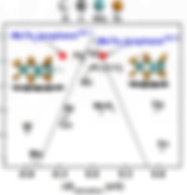



Our Team
We are part of the Department of Chemical Engineering at Auburn University.
Our research is focused on leveraging multiscale modeling methods to perform atomistic- to reactor-scale simulations to provide fundamental insights when experiments are unattainable or difficult to attain.
By developing and applying novel modeling and simulation methods, we are bridging the gap across length and time scales for realistic computational models. Current research in the Adamczyk lab aims to make multiscale modeling both predictive and routine.
Capabilities
The modeling capabilities of the Adamczyk Lab lie in using computational (bio)chemistry and (bio)physics techniques, detailed kinetic modeling, and reaction engineering and optimization principles to investigate complex reacting systems and materials properties.
Key methods include, but are not limited to, computational (bio)chemistry (i.e., atomistic modeling using quantum mechanics, molecular mechanics, molecular dynamics, and hybrid quantum mechanics/molecular mechanics techniques for single- and multi-phase systems), automated reaction network generation, in silico hypothesis testing, structure-function relationships, and uncertainty analysis.
Connect with Us
WE ARE HERE TO HELP YOU DRIVE CHANGE
TOGETHER WE WILL SHAPE THE FUTURE.
TEL:
334-844-4720
MAIL:
FOLLOW US:
News & Publications

-
Excellent electrocatalytic performance with low overpotential, high exchange current density, and small Tafel slope.
-
Near thermoneutral catalytic activity of MoTe2/graphene from periodic plane-wave density functional theory (DFT) study, reveals the most active sites are the molybdenum corner and molybdenum-tellurium edge sites.

-
In this study, we have modeled a lignin structure composed of 10 β-O-4′ linked guaiacyl (G) units, such that this work represents, to the best of our knowledge, the largest structure that has been examined to date using quantum mechanical calculations.
-
As such, this work can provide information on a model, the size of which is more representative of the lignin polymer than has been previously reported.